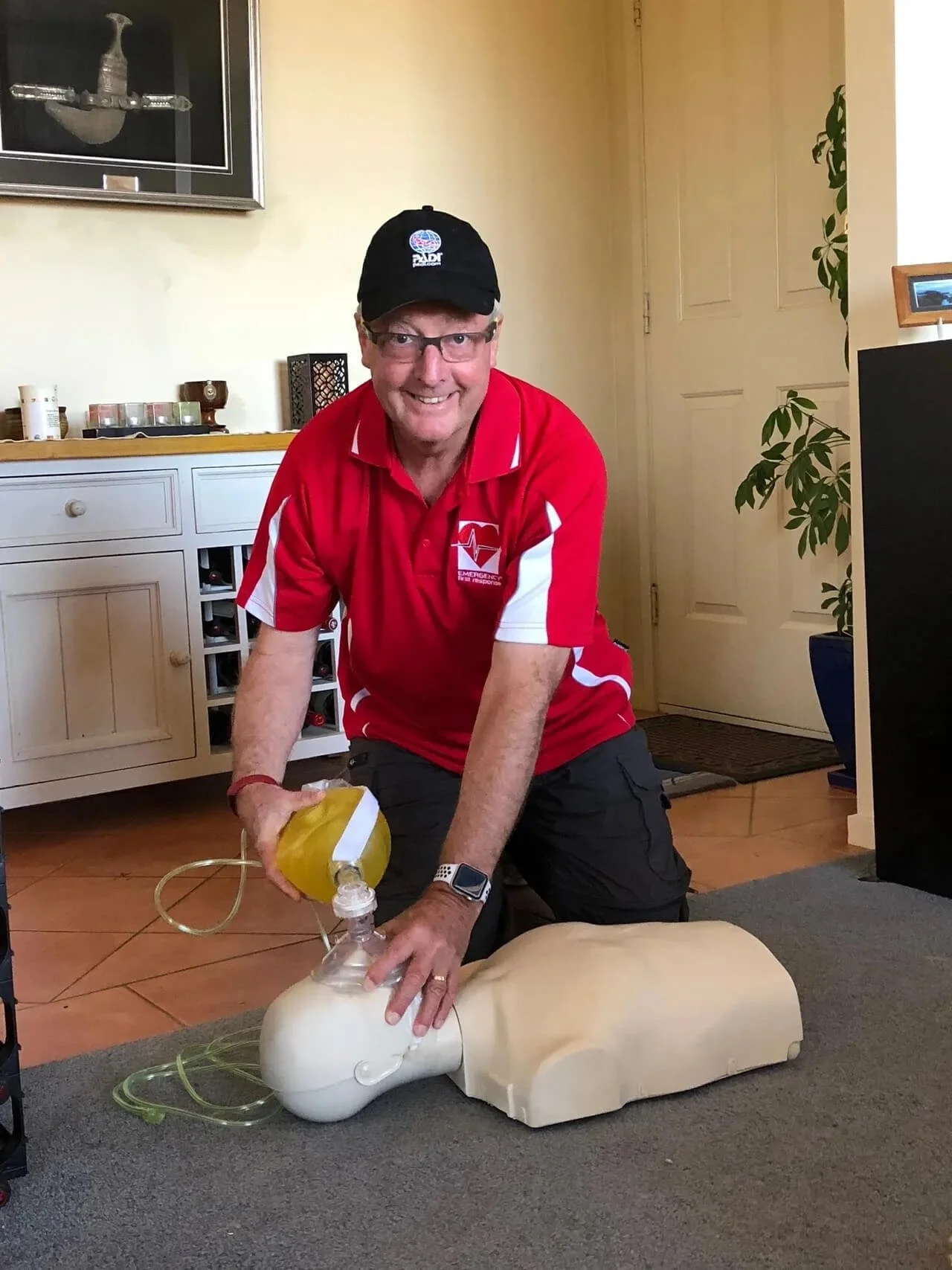Embracing Cultural Sensitivity in CPR: A Common Sense Approach
peter performing CPR with a bag valve mask on a mannikin
In today’s diverse society, it’s crucial to approach emergencies like CPR (Cardiopulmonary Resuscitation) with medical knowledge and a deep respect for cultural sensitivities. Here, we explore how we can effectively perform CPR while honouring the beliefs and practices of different cultures.
Understanding Cultural Differences:
Cultures have unique beliefs surrounding touch, personal space, and gender interaction. For example, in some cultures, physical contact between opposite genders who are not family members can be considered inappropriate. In emergencies, these cultural norms can impact how CPR is administered.
Common Sense Guidelines for Culturally Sensitive CPR:
1. Ask for Consent When Possible:
Before initiating CPR, if the situation allows (such as in cases where the person is conscious but in distress), it’s essential to ask for their consent. This respects their personal and cultural boundaries.
2. Educate and Communicate:
Offering quick, clear explanations of what CPR involves can help alleviate concerns from bystanders or family members who might be unfamiliar with the process. This also explains the necessity of immediate action to save lives, which might help gain their understanding and support.
3. Gender Sensitivity:
If possible, consider the gender of the rescuer and the patient. In some cultures, having a rescuer of the same gender can make the situation less stressful for the patient and their family. If you’re organizing CPR training, include training on how to handle such sensitive situations.
4. Training in Cultural Competence:
Encourage first responders and bystanders to undergo training that includes cultural competence. This training should cover basic dos and don’ts and provide strategies for quick thinking in diverse scenarios.
5. Use of CPR Barriers:
When performing mouth-to-mouth resuscitation, a barrier device such as a face shield can help address hygiene concerns and make the procedure more acceptable to people from different cultures.
Community Engagement and Education:
Building awareness through community education can demystify CPR and explain its critical role in saving lives. Collaborative sessions involving community leaders and healthcare professionals can create a platform for dialogue and education, fostering a community that respects both life-saving medical practices and cultural values.
Conclusion:
By integrating cultural sensitivity into CPR practices, we respect individual dignity and enhance the effectiveness of emergency response in diverse communities. It’s about combining medical urgency with a respectful understanding of cultural nuances, ensuring that everyone feels safe and respected in life-threatening situations regardless of background.
**Call to Action:**
Let’s continue to educate ourselves and our communities about the importance of culturally sensitive CPR. Share this message, participate in discussions, and join training programs. Together, we can save lives with knowledge, respect, and empathy.

